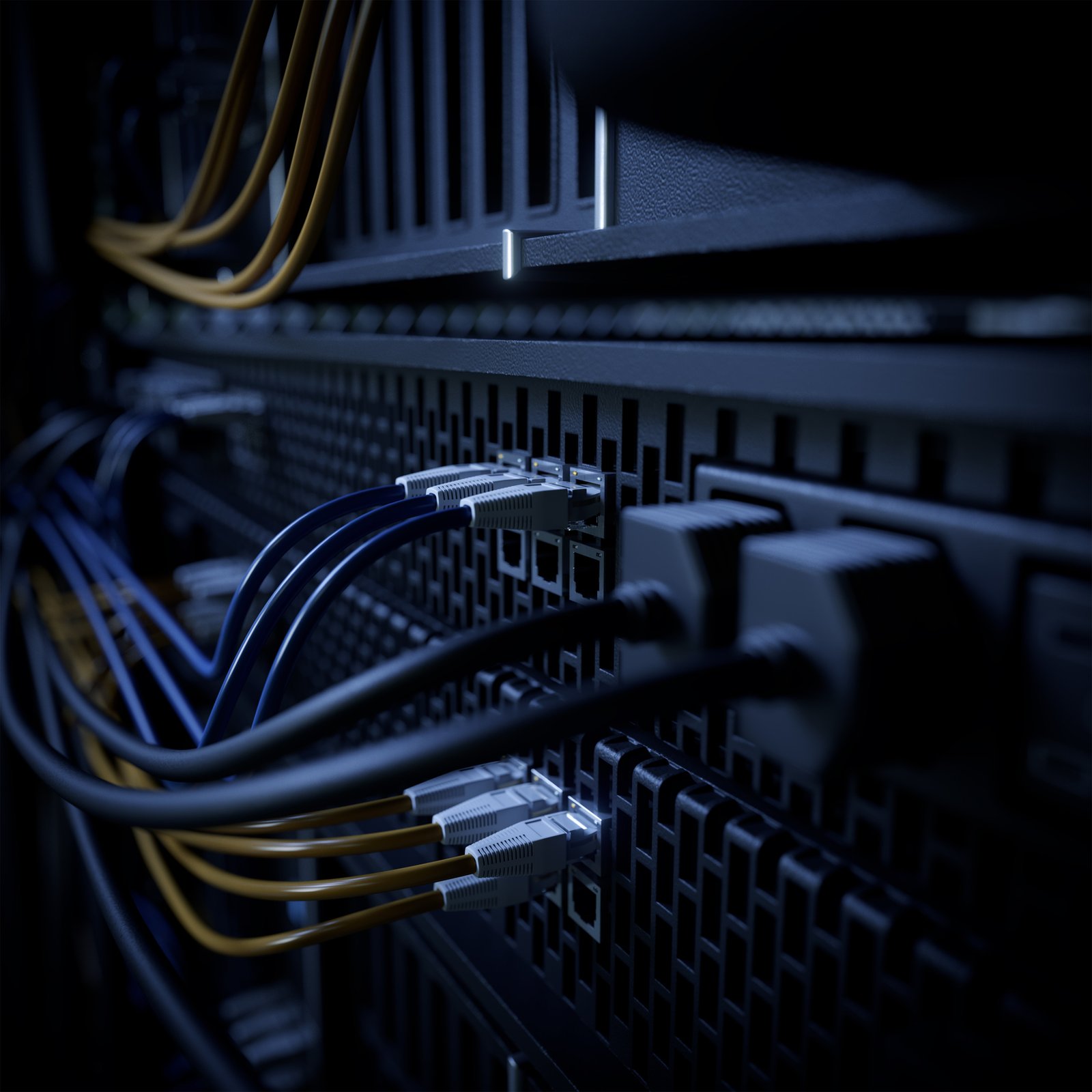In today’s digital-first world, data center connectivity is the backbone of seamless communication and data exchange between various systems, applications, and users.
As businesses increasingly rely on cloud services, remote work, and real-time data processing, the demand for efficient, secure, and high-speed data center connectivity has grown exponentially.
“Despite being one of the most important components in a data center, connectivity options can be complex, confusing, and hard to understand. There are numerous connectivity options and types including cross connects, dedicated and blended internet, cloud direct connects and, interconnection,” said datacenters.com.
Like power, cooling, and security, connectivity for a data center is an essential element.
“Without outside connectivity, a data center is just a building of computers that can only talk to each other,” says Data Center Hawk.
The Importance of Data Center Connectivity
Data centers, whether owned by a company or hosted by a third-party provider, need to connect to one another or to external entities such as branch offices, partners, and cloud services.
This connectivity ensures efficient data transfer, access to applications, and seamless communication. The importance of data center connectivity has evolved as technology changes to include:
- Cloud Adoption: As businesses migrate to cloud platforms, reliable data center connectivity is vital to ensure smooth integration between on-premises systems and cloud services.
- Remote Work: The rise of remote work, accelerated by the pandemic, requires secure and fast access to corporate resources, making robust data center connectivity crucial.
- Real-time Applications: Applications such as video conferencing, IoT devices, and real-time analytics demand low-latency connectivity for optimal performance.
- Global Reach: Organizations with a global presence require data centers to be interconnected across regions for efficient data sharing and redundancy.
- Data Security: Secure connectivity is essential to protect sensitive data during transmission and ensure compliance with regulations.
“In simpler days of the internet, one computer would talk directly to another and get everything it needed. A delay of several milliseconds would not cause an issue. Today, companies are using increasingly complex systems to support their customers' needs,” says Data Center Hawk. “It’s not uncommon for a company to spread their IT workload between cloud, colocation, and in-house. Within those buckets, they may have a multitude of microservices spread across different servers. As the number of points of communication increases, so does the importance of keeping those communications as fast as possible.”
Data Center Connectivity: Speed + Efficiency
There is so much focus on data center connectivity speed that efficiency can get lost in the shuffle.
Connectivity speed is the rate at which information travels from a device to the internet, like when sending an email or file. Connectivity efficiency is the percentage of bandwidth used for actual data transport as compared with the total bandwidth consumed.
To put it another way: speed is how quickly you can accomplish a task, while efficiency is a comparison of the useful work performed by a machine or in a process to the total work needed to complete a process.
Speed and efficiency are related, but they're not synonymous. Efficient data center connectivity is important for several reasons:
- Business Continuity: Seamless connectivity ensures uninterrupted access to critical applications and resources, minimizing downtime.
- Data Replication: Reliable connectivity supports data replication between geographically dispersed data centers, enhancing data redundancy and disaster recovery.
- Scalability: As businesses grow, scalable connectivity solutions accommodate increased data transfer requirements without disruptions.
- Cost Efficiency: Streamlined connectivity reduces data transfer costs and optimizes resource utilization.
- Collaboration: Effective connectivity enables real-time collaboration among teams regardless of their geographical locations.
- Competitive Advantage: Fast, responsive connectivity can give businesses a competitive edge by delivering superior customer experiences.
Data Center Connectivity Options: Direct Connect, VPN, MPLS
Three common methods for data center connectivity are direct connect, VPN (Virtual Private Network), and MPLS (Multiprotocol Label Switching).
Each method serves specific needs based on factors such as security, speed, and scalability. Let's examine all three, looking at their advantages and disadvantages:
Direct Connect
Direct connect is a dedicated network connection established between two data centers such as an organization's data center and a cloud service provider like AWS, Azure, or Google Cloud.
It offers, at a price, a private, high-speed link for data transfer.
This type of data center connectivity is favored by enterprises with high data transfer requirements, who need a reliable and secure connection to their cloud resources.
Pros of direct connect:
- Low Latency: Direct connect offers reduced latency for cloud applications, ensuring optimal performance.
- Enhanced Security: Data transferred over direct connect bypasses the public internet, reducing the risk of data breaches.
- Consistent Performance: Direct connect provides stable, consistent bandwidth for data transfers.
- Predictable Costs: Since direct connect is a dedicated connection, costs are often predictable.
- Scalability: It supports varying bandwidth options to accommodate changing needs.
Cons of direct connect:
- Setup Complexity: Establishing direct connect requires coordination between the organization and the cloud provider.
- Initial Cost: The setup and maintenance costs can be higher compared to other connectivity methods.
- Limited Redundancy: Single direct connect links may lack redundancy, potentially leading to downtime if the link fails.
VPN (Virtual Private Network)
A virtual private network (VPN) establishes a secure, encrypted tunnel over a public network (like the Internet), allowing remote users or branch offices to securely access resources in a data center.
This data center connectivity method is commonly used by businesses to provide secure remote access for employees, branch and remote offices, or partners.
Pros of VPNs:
- Remote Access: VPNs enable secure remote access to data center resources from anywhere.
- Cost-Effective: Setting up a VPN is generally more cost-effective compared to dedicated connections.
- Encryption: VPNs encrypt data during transmission, enhancing security and privacy.
- Flexibility: VPNs are suitable for connecting remote offices, mobile employees, and external partners.
Cons of VPNs:
- Performance Variability: VPN performance can be affected by internet congestion, leading to inconsistent speeds.
- Security Concerns: While encrypted, VPNs still rely on the public internet, raising potential security concerns.
- Scalability Challenges: Scaling VPNs to accommodate increased users or data can be complex.
MPLS (Multiprotocol Label Switching)
Multiprotocol label switching (MPLS) is a high-performance, protocol-independent technology that directs data packets based on labels, optimizing data routing and transmission across a private network.
Enterprises with multiple branch offices often use MPLS to establish a private network for secure communication between sites and data centers.
MPLS can be viewed as a good compromise between direct connect and VPN, offering better performance and reliability than VPN at a lower cost than direct connect.
Pros of MPLS:
- Low Latency: MPLS offers low-latency routing, making it suitable for real-time applications.
- Quality of Service (QoS): MPLS supports QoS mechanisms, prioritizing critical traffic over less important data.
- Security: MPLS operates within a private network, providing inherent security benefits.
- Scalability: MPLS networks can be easily scaled to accommodate growing traffic.
Cons of MPLS:
- Cost: MPLS can be more expensive than other options due to its dedicated infrastructure and management.
- Deployment Complexity: Setting up and managing MPLS networks can require specialized expertise.
- Limited Cloud Integration: MPLS may not be as well-suited for cloud connectivity as other methods.
Tale of the Tape: How These Connection Methods Stack Up
Here is a chart that summarizes the features of these three types of data center connections:
|
Feature |
Direct connect |
VPN |
MPLS |
|
Cost |
Most expensive |
Least expensive |
In between |
|
Performance |
Best |
Worst |
Better than VPN |
|
Reliability |
Best |
Worst |
Better than VPN |
|
Security |
Highest |
Medium |
Medium |
|
Scalability |
Good |
Good |
Good |
|
Complexity |
High |
Low |
Medium |
The choice of data center connectivity method depends on an organization's specific requirements for speed, security, scalability, and budget. Direct connect, VPN, and MPLS each have their advantages and disadvantages, catering to diverse connectivity needs in a rapidly evolving digital landscape.










